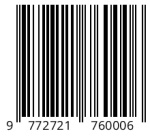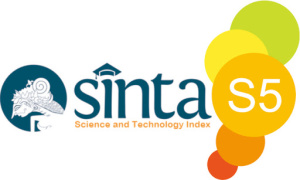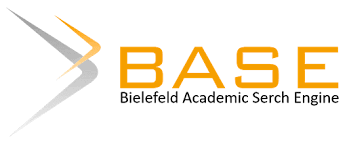PERANCANGAN MEDIA INFORMASI TEMPAT WISATA PURA GOA GAJAH BERBASIS ANIMASI 2D UNTUK ANAK USIA DINI
DOI:
https://doi.org/10.59819/jmti.v14i1.3744Keywords:
media informasi, animasi 2D, Goa Gajah, anak usia dini, media pembelajaranAbstract
In the midst of the onslaught of spectacles from abroad towards Balinese children, Balinese children rarely know about the historical places in Bali. From an early age, most parents introduce their children to shows from abroad. If this continues, the Balinese people will not know the history of their own region. Therefore, this research aims to design information media introducing one of the historical places in Bali, namely Goa Gajah Temple, based on 2D animation for early childhood. 2D animation was chosen because, from interviews with children's parents, it was found that animation or cartoons were more popular with children. The data collection techniques used in this research are primary and secondary data collection techniques. The media realization stage consists of pre-production, production, and post-production. Testing of information media was carried out through questionnaires given to media experts, content experts, and early grade students in elementary schools. The results of media testing by media experts were good, with a score of 88. The results of media testing on content experts were very good, with a score of 95, while the results of media testing on students were very good, with a score of 95
Downloads
References
Akbar, M. R., Ningtyas, S., Aziz, F., Rini, F., Putra, I. N. A. S., Adhicandra, I., ... & Junaidi, S. (2023). MULTIMEDIA: Teori dan Aplikasi dalam Dunia Pendidikan. PT. Sonpedia Publishing Indonesia.
Jogiyanto Hartono, M. (Ed.). (2018). Metoda pengumpulan dan teknik analisis data. Penerbit Andi.
Munawwarah, H., & Maemonah, M. (2021). Pendidikan Karakter Anak Perspektif Aliran Filsafat Behaviorisme. Jurnal Golden Age, 5(01), 71-82.
PF, K. A. P. D., & Perbowosari, H. The Implementation of SAD Kertih Teaching in Actualizing Environment Cultured Primary School. PROCEEDING ICETE 2016, 163.
Putra, I. N. A. S., & Mudra, I. W. (2022). Digital Learning Media for Early Children Based on Local Wisdom of the “Jagat Kertih.”. INTERNATIONAL JOURNAL OF HUMANITIES, LITERATURE & ARTS, 5(1), 60-68.
Putra, I. N. A. S., & Saputra, I. P. A. (2017). Perancangan Media Informasi Program Studi Teknik Informatika Dan Sistem Komputer Pada STMIK STIKOM Indonesia Berbasis Animasi 2D. Jurnal Bahasa Rupa, 1(1), 17-24.
Rahma, Z., & Maemonah, M. (2021). Filsafat Behaviorisme Dalam Pendidikan Anak Usia Dini Perspektif Rudolf Steiner. As-Sibyan: Jurnal Pendidikan Anak Usia Dini, 6(1), 29-40.
Rasmini, N. W. (2022). Implementation strategy of tri hita karana in the family toward a healthy community. Indonesian Journal Of Educational Research and Review, 5(3), 588-597.
Wardani, N. W. W., Putra, I. N. A. S., Sutarwiyasa, I. K., Putra, P. S. U., & Amelia, D. (2022). Perancangan Film Animasi 2D Cerita Rakyat Bali “Balapan Menjangan Dan Siput”. Jurnal Manajemen dan Teknologi Informasi, 12(2), 136-143.
Yusa, I. M. M., & Saputra, I. P. S. (2016). Pemanfaatan Animasi 2 Dimensi Model Infografik dalam Perancangan Video Iklan Layanan Masyarakat Tentang Pengolahan Sampah Rumah Tangga di Denpasar. Jurnal Nasional Pendidikan Teknik Informatika: JANAPATI, 5(1), 1-10.
Downloads
Published
Issue
Section
License
Copyright (c) 2024 Jurnal Manajemen dan Teknologi Informasi

This work is licensed under a Creative Commons Attribution-ShareAlike 4.0 International License.
Authors who publish with the Jurnal Manajemen dan Teknologi Informasi agree to the following terms:
1. Authors retain copyright and grant the journal the right of first publication with the work simultaneously licensed under a Creative Commons Attribution License (CC BY-SA 4.0) that allows others to share the work with an acknowledgment of the work's authorship and initial publication in this journal.
2. Authors are able to enter into separate, additional contractual arrangements for the non-exclusive distribution of the journal's published version of the work (e.g., post it to an institutional repository or publish it in a book), with an acknowledgment of its initial publication in this journal.
3. Authors are permitted and encouraged to post their work online (e.g., in institutional repositories or on their website) prior to and during the submission process, as it can lead to productive exchanges, as well as earlier and greater citation of published work. (See The Effect of Open Access) .





















